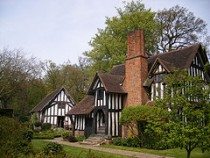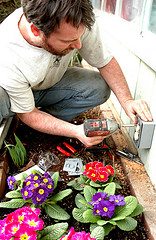
Timber frame houses may not be as popular in the UK as some other countries in the world, but that seems to be changing with stats showing that at least a quarter of new home builds use timber frames. There are many advantages to choosing a timber frame, for example, they retain more heat than masonry buildings (great for cold UK winters) and they are hardy, sometimes lasting hundreds of years. The construction time is much quicker than a masonry house and they are also easy to maintain.
In fact, the only real problem is that they can be vulnerable to dry rot and decay. With proper care and maintenance, however, you can ensure that the timber in your home is still structurally sound decades from now.
Let’s look at dry rot and decay and how to treat them.
- Dry rot
According to DIY Data, dry rot is caused by a fungus that lives in moist, poorly ventilated environments and can even go through bricks to reach the timber behind. It can affect all wood in your home, including structural timber, skirting boards, door frames and floors and causes deep cracks.
In the early stages, dry rot looks like whitish felt or cotton wool, but it develops into thick strands. If left unchecked, it can grow mushroom-like “fruit” which sprout through plaster and paint. Unfortunately, the first time many people notice that they have a dry rot problem is when they see fungal mushrooms growing from their walls.
DIY Data suggests the best way to treat dry rot is to replace affected joists with joist hangers and by improving ventilation in affected areas. If the problem is severe, however, the damaged wood will have to be removed and replaced (some specialists will even remove the wood a metre on each side of the affected area). In some instances, where the brickwork has been contaminated, for example, a fungicide treatment might also be necessary.
- Decay
Decay is caused by moisture. Once timber starts to decay, it can also become very attractive to beetles which will bore into it and make it home. Before you tackle decaying timber, you need to find the source of the problem. Usually it’s related to blocked/overflowing gutters or poor-quality cement. Address that problem first, otherwise the damp will recur.
Roger Hunt says that you can test for decay by gently prodding the problem areas with a penknife (any sharp object will do). If the penknife goes into the wood then you have a problem.
You’ll also find out if you have beetle problem if you find fine dust or “frass” on your timber, which is where the beetles bore in and out of the wood. If the damage is light-coloured it’s fresh and you have an active problem that needs to be addressed, but if it’s dark then the beetles are long gone.
If you think you have a problem, call in a specialist who will assess or test the timber. According to SPAB Techinical Secretary Dougla Kent, this can be done using infrared thermography, microdrilling or fibre option surveying.
Roger Hunt says that when treating decay you should limit the repairs to the smallest section of wood possible, to protect and retain the original wood, as well as structural integrity. Metal straps are a wonderful way to repair rotten timber without destroying the wood. The strap is bolted into place and holds the wood together.

When some electrical wiring in your home goes phut, it can be quite tempting to try a quick DIY fix using pliers and insulation tape. This is, of course, an exceptionally bad idea because not only could you bring down your house’s whole electrical system but you could also die (according to Electrical Safety First, 70 people die and over 350,000 are seriously injured in electrical accidents every year in the UK).
A far better idea is call a professional electrician to come and fix the problem.
First of all, you should only use a registered electrician. Electrical Safety First has found that 25% of UK adults don’t use registered electricians and 33% will hire an electrician without checking their credentials based on a recommendation. Doing so places your family at risk and increases the chances of your house going up in an electrical fire. There are four recognised organisations in the UK the register professional electricians and provide a complaints procedure for customers.
- British Standards Institution (BSI)
- ELECSA
- National Association of Professional Inspectors and Testers (NAPIT)
- NICEIC Certification Services
These organisations will also help you find registered electricians in your area or you can use the Electrical Safety Register.
Even if you find an electrician from any of these organisations, you should still ask to see the person’s registration card and even call the organisation to verify it. Properly registered electricians will be only too happy to give you their details so you can verify their credentials. You should take it as a warning sign if an electrician takes offence or is reluctant to comply.
(Note: This also applies to gas engineers, who must be Gas Safe registered.)
It can be tedious but it’s also a good idea to get quotes from several different electricians. Compare every aspect of each quote because there might be hidden costs or optional extras in one that aren’t in others. You’re not necessarily looking for the cheapest; you’re looking for the best value for money.
If the electrician you’ve chosen has other staff members who might handle the call out, make sure you get their details too, so you can also verify their credentials and qualifications.